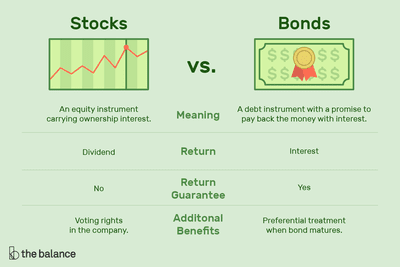Beginner’s Investments Guide to Make Your Money Work for You
So you’ve decided to start investing. Good Job! Whether you’re just starting out on your own, in the middle of your career, approaching retirement age, this means you’ve begun to think about your financial future, and how you might carefully manage your capital so that it can work for you.
Simply placing our money in a savings account won’t make us rich. You’d have to earn a lot – and save most of it. Instead, we need our money to make money, which is one way of describing what investing is. When you invest, you tap the power of compound interest. Here’s how it works:
You invest ₱8,000 and your investments grow 6% annually
Left where it is, it will grow ₱480 by next year for a total ₱8,480 in the account
After another year passes with a 6% gain, your balance will jump ₱508.80 for a total ₱8,980.80
The following year, the gain would be ₱538.85 for a total ₱9519.65
And the year after that, the account would earn ₱571.18 for a total of ₱10,090.83

As you can see, compounding can transform modest savings into a serious nest egg over time. The earlier you start investing, the more you stand to gain from the magic of compound interest.
See here, nobody starts out a master, and even the best investors in the world were once sitting where you are right now!
Which Types of Assets You Want to Own?
Stocks

Stocks or equities are shares of a company that you ideally buy low and sell higher in the Stock Market. For example, when Facebook first went public in May 2012, which means it sold shares on a public exchange, you could buy shares for about $38 each. As of the first Monday in February 2020, the share price was around $204. So if you had bought 100 shares for $3,800, and sold them roughly eight years later for $20,400, you would have made $16,600 ($20,400 – $3,800) minus any fees. That’s a little more than a five-fold increase in eight years.
Dividends are another way stocks can earn you money. Depending on the company, it will pay out a part of its earnings per share, often four times a year, according to a set schedule.
There are two ways that you can get paid.
- Stock
- Cash
In stock dividends, you don’t receive cash. Instead, you will be given more shares in proportion to your investment. The bigger capital you’ve put into the company, the more shares that you get as your dividend.
There are a lot of companies listed in the Philippine Stock Exchange, PLDT and Globe Telecom are some of the companies that have good Dividend Yields. (Based on 2020 data).
Mutual Funds & ETFs

Mutual funds and exchange-traded funds (ETFs) are similar in that both are baskets of different stocks and/or bonds. Some focus on a certain sector while others track certain indexes. They are designed to offer the diversification, they are less risky than individual stocks since your money is spread across many investment instruments.
That said, mutual funds and ETFs have some differences. The biggest is how they trade. When you buy a mutual fund, you don’t actually know what price you are paying. This is because the price resets every night, based on the closing prices of the fund’s holdings.
ETFs, on the other hand, trade like stocks, meaning you can see the price as they fluctuate throughout the day – and set the price you’re willing to pay. There are no minimums for these securities, though if your brokerage charges a commission per trade, you wouldn’t want to buy shares singly. Many ETFs follow well-known indexes like the S&P 500 and the Dow Jones Industrial Average. Others track collections of stocks that concentrate on industries like healthcare, technology, or materials. Hence, the PSEi index like FMETF (First Metro Exchange Traded Fund).
Bonds

A bond is a debt security, under which the issuer owes the holders a debt and (depending on the terms of the bond) is obliged to pay them interest (the coupon) or to repay the principal at a later date, termed the maturity date. Interest is usually payable at fixed intervals (semiannual, annual, sometimes monthly). Very often the bond is negotiable, that is, the ownership of the instrument can be transferred in the secondary market. This means that once the transfer agents at the bank medallion stamp the bond, it is highly liquid on the secondary market.
Bonds are considered the most common type of fixed income securities, which is defined as debt instruments that pay a fixed amount of interest in the form of coupon payments and returns the principal to the investor (bondholder in the case of bonds) upon maturity.
1. Maturity-based bonds
Bonds categorized based on the length of time it will mature.
Treasury Bills (T-bills) – Bonds that mature in less than 1 year (short term). The most common tenors (length of maturity) for T-bills are 91 days, 181 days, and 364 days.
2. Issuer-based bonds
These are bonds that are classified according to who issued it:
Treasury Securities – Bonds issued by the Bureau of Treasury
Government Bonds – Bonds that are issued by various government agencies like HDMF(Pag Ibig Fund), Government National Mortgage Association (GNMA), Federal National Mortgage Association, and others.
Municipal Bonds – Bonds issued by the local government units (LGUs).
Corporate Bonds – Bonds issued by public and private companies.
Benefits of Investing in Bonds
Provides better returns on your money compared to banks, serves as another investment tool for diversifying your investments. Lets you preserve your capital and earn interest from it at the same time. Generally viewed as safer than stocks as it’s less volatile in nature (especially short and medium-length bonds).
Real Estate

Real estate investing is the oldest investment instrument older than mankind itself, there’s a saying “Buy land they don’t make it anymore!”.
There are several ways to make money investing in real estate, but it typically comes down to either developing something and selling it for a profit, or owning something and letting others use it in exchange for rent or lease payments. For a lot of investors, real estate has been a path to wealth because it more easily lends itself to using leverage. This can be bad if the investment turns out to be a poor one, but, applied to the right investment, at the right price, and on the right terms, it can allow someone without a lot of net worth to rapidly accumulate resources, controlling a far larger asset base than he or she could otherwise afford.
Something that might be confusing for new investors is that real estate can also be traded like a stock. Usually, this happens through a corporation that qualifies as a real estate investment trust, or (Real Estate Investment Trust) REIT. For example, you can invest in hotel REITs and collect your share of the revenue from guests checking into the hotels and resorts that make up the company’s portfolio. There are many different kinds of REITs; apartment complex REITs, office building REITs, storage unit REITs, REITs that specialize in senior housing, and even parking garage REITs.
Now we’ve learned some of the basic investment instrument, maybe you now have selected which one is the best for you and your investment objective. Now let us discuss the most important term that we need to learn.
Diversification
Diversification is a technique that reduces risk by allocating investments among various financial instruments, industries, and other categories. It aims to maximize returns by investing in different areas that would each react differently to the same event.

Why diversify you ask?
Let’s say you have a portfolio of only Mining stocks. If it is announced that the government will shut down Mining operations in some parts of the country and operations and contracts are canceled, share prices of Mining stocks will drop. That means your portfolio will experience a noticeable drop in value.
By diversifying, you’re making sure you don’t put all your eggs in one basket.
Ready to start your financial journey? email us at [email protected] or follow our social media account and join our groups, Cheers!




